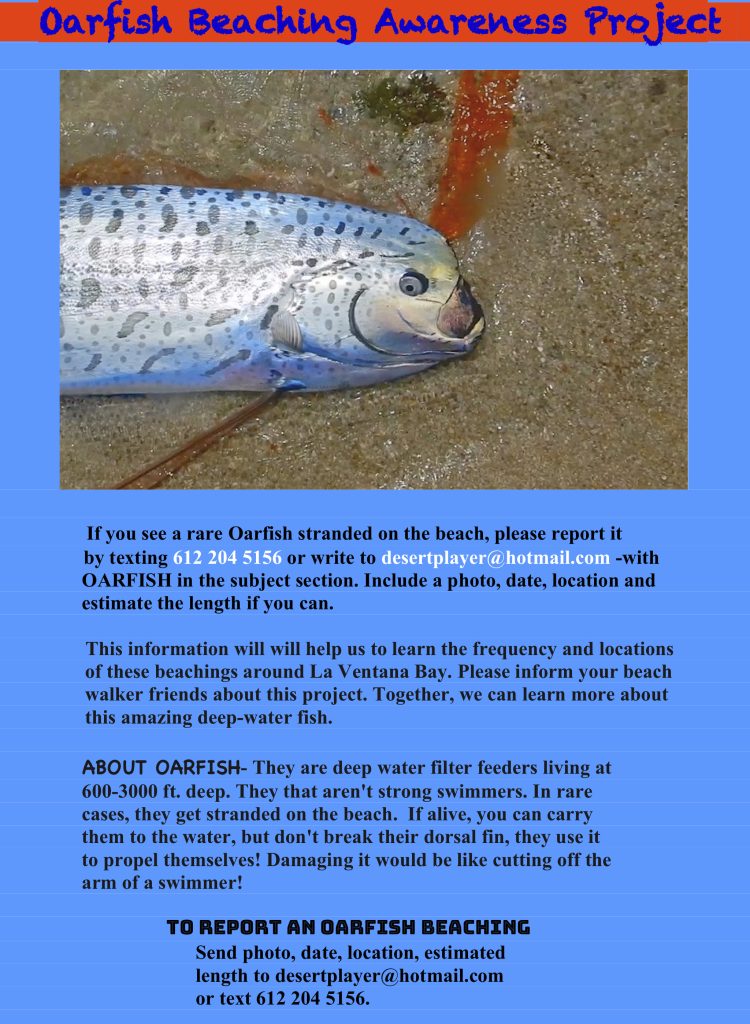I will be sharing a video from my Oarfish Rescue Video Series at Baja Joe’s Film Festival on Sat. March 8th& Sun. March 9th at 6:30pm. Please come join in on the fun. I’ll be at both events.
There was a recent Oarfish beaching in Baja California Sur reported in an article in People Magazine, even made it all the way to the NY Times! Thank you to those who have been passing along articles to our Oarfish Beaching Awareness Project Whatsapp group. There is a more recent article in Forbes Magazine that debunks the “Doomsday Fish” theory, which is, that Oarfish are being driven from deep water onto our beaches by earthquakes.(links to articles highlighted above)
Our Oarfish Beaching Awareness Project group is collecting data on beached Oarfish, so if you run across one, or hear of one that was stranded, please call or message me. William 52 612 204 5156. Here is our poster you may have seen around town that explains how to report an Oarfish Beaching.
We are collaborating with a senior researcher at CICIMAR- the National Marine Research Institute in La Paz, to provide samples of deceased Oarfish for analysis. If you watched the “How to Rescue an Oarfish” video, at the end there are photos documenting a huge Oarfish beached in El Sargento from 21-years ago. Felipe Galvan-Magana, took samples of that Oarfish to analyze at his laboratory at CICIMAR, where he’s worked as a researcher for 43 years.
We want to provide Felipe with more Oarfish samples for his analysis, so he can find out if the Oarfish are being impacted by environmental toxins either natural or man-made. To help him get to the bottom of this, we are collecting a list of people to help take Oarfish samples, preserve them under ice, and find a way to get them to Felipe in La Paz. Having a list ensures our chances someone is available should we receive word of a beached (dead) Oarfish. If you’re interested in helping, please contact me. Together, we can learn more about this amazing fish.
Hope to see you at the Baja Joe’s Film Festival, March 8th & 9th. William Ihne 52 612 204 6156. Naturalist videographer, underwater explorer/observer, writer. Coordinator for Oarfish Beaching Awareness Project, Observing Baja Coral Reef Fish, Youtube channel.




